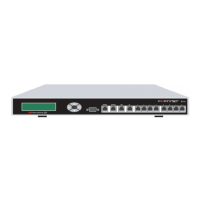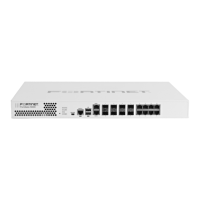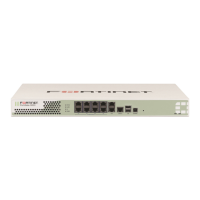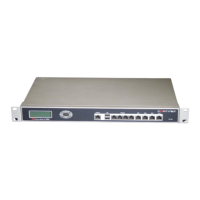Introduction About this document
FortiGate Version 4.0 MR1 Administration Guide
01-410-89802-20090903 25
http://docs.fortinet.com/ • Feedback
• System DHCP explains how to configure a FortiGate interface as a DHCP server or
DHCP relay agent.
• System Config contains procedures for configuring HA and virtual clustering,
configuring SNMP and replacement messages, and changing the operation mode.
• System Admin guides you through adding and editing administrator accounts, defining
admin profiles for administrators, configuring central management using the
FortiGuard Management Service or FortiManager, defining general administrative
settings such as language, timeouts, and web administration ports.
• System Certificates explains how to manage X.509 security certificates used by
various FortiGate features such as IPSec VPN and administrator authentication.
• System Maintenance details how to back up and restore the system configuration
using a management computer or a USB disk, use revision control, enable FortiGuard
services and FortiGuard Distribution Network (FDN) updates, and enter a license key
to increase the maximum number of virtual domains.
• Router Static explains how to define static routes and create route policies. A static
route causes packets to be forwarded to a destination other than the factory configured
default gateway.
• Router Dynamic explains how to configure dynamic protocols to route traffic through
large or complex networks.
• Router Monitor explains how to interpret the Routing Monitor list. The list displays the
entries in the FortiGate routing table.
• Firewall Policy describes how to add firewall policies to control connections and traffic
between FortiGate interfaces, zones, and VLAN subinterfaces. Also describes how to
add DoS policies to apply DoS sensors to network traffic and how to add sniffer policies
to operate the FortiGate unit as an IDS appliance by sniffing packets for attacks without
actually receiving and otherwise processing the packets
• Firewall Address describes how to configure addresses and address groups for firewall
policies.
• Firewall Service describes available services and how to configure service groups for
firewall policies.
• Firewall Schedule describes how to configure one-time and recurring schedules for
firewall policies.
• Traffic Shaping how to create traffic shaping instances and add them to firewall
policies.
• Firewall Virtual IP describes how to configure and use virtual IP addresses and IP
pools.
• Firewall Load Balance describes how to use FortiGuard load balancing to intercept
incoming traffic and balance it across available servers.
• Firewall Protection Profile describes how to configure protection profiles for firewall
policies.
• SIP support includes some high-level information about VoIP and SIP and describes
how FortiOS SIP support works and how to configure the key SIP features.
• AntiVirus explains how to enable antivirus options when you create a firewall protection
profile.
• Intrusion Protection explains how to configure IPS options when a firewall protection
profile is created.
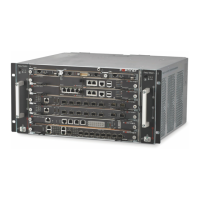
